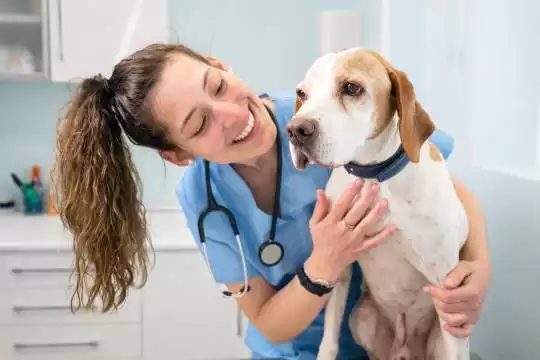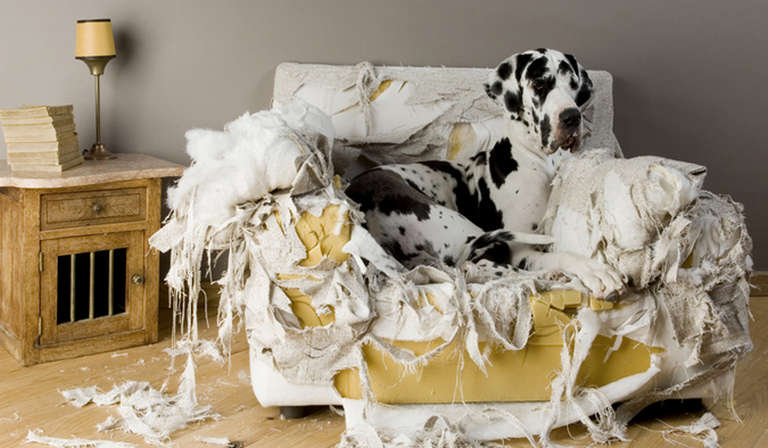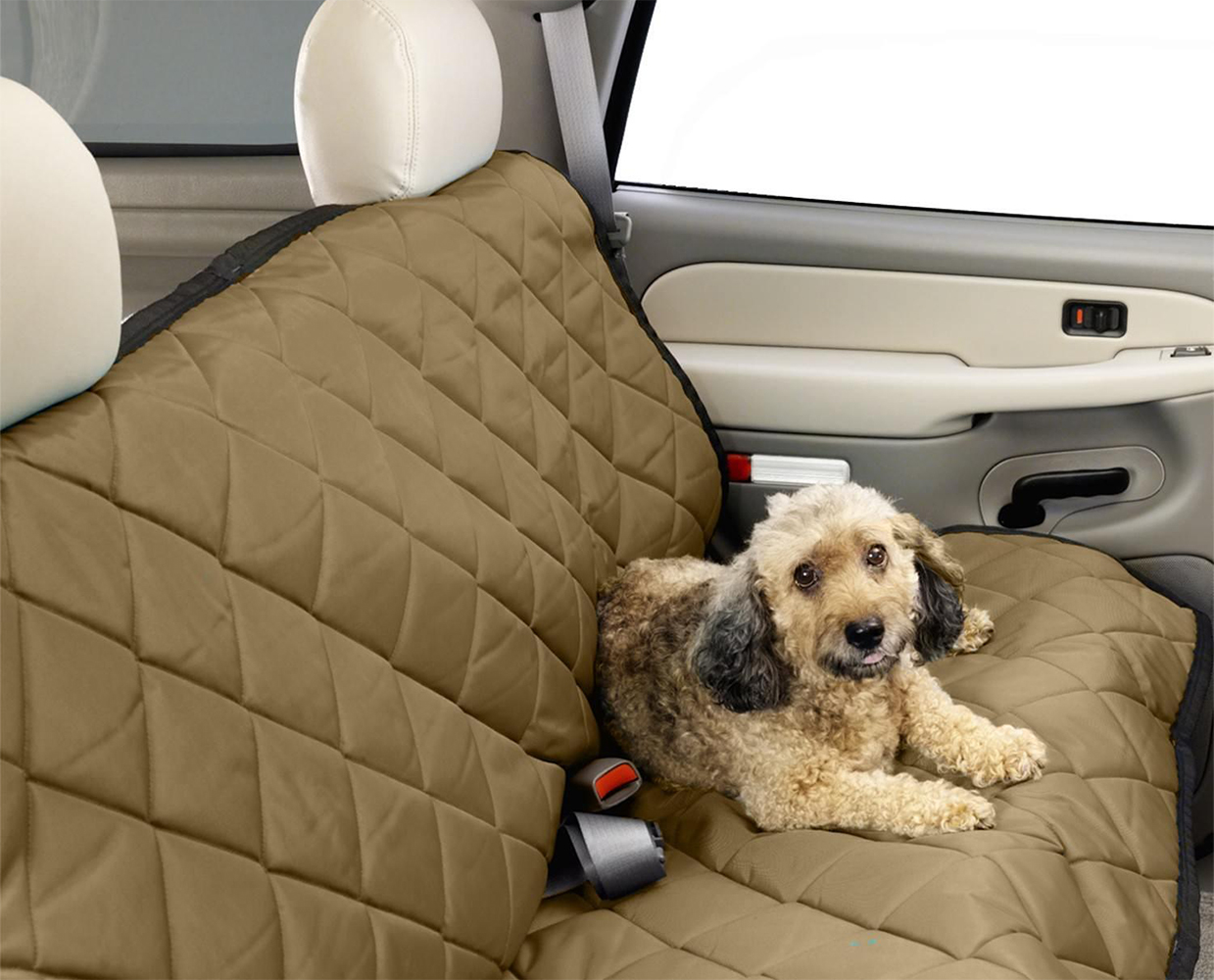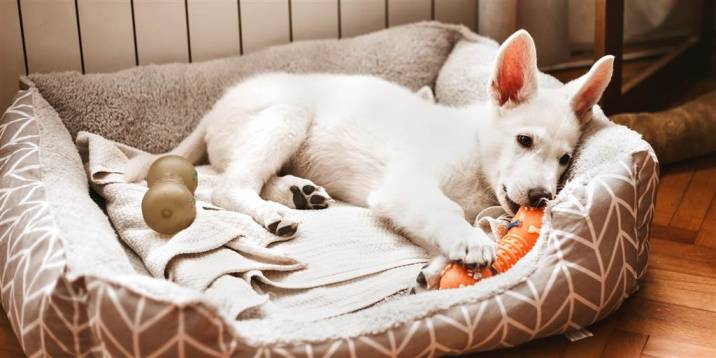Learning more about crate training can be helpful and even beneficial; find out how long a dog should stay in his crate and much more in our handy crate training guide!
Connect with a verified veterinarian in minutes. Licensed vets are available 24/7 to answer your questions. No need to worry about your furry family member.
What is Crate Training?
You may not be familiar with the term, but crate training involves teaching your dog or puppy to relax in his own space, such as a crate or kennel. Some dogs take to being in a crate or kennel easily, while others will balk at the very thought of entering these spaces.
Crates can become something like a den for your dog. In the wild, canines create dens for protection and as a place to rear their young. Dogs still have the denning instinct, with some dogs taking to the crate the same way they would a den.
Is Crate Training Cruel?
When used properly, a crate can be a great place for your dog to hang out. However, when misused, crates can be harmful to your dog in many ways, including physically and psychologically. Keeping a dog in a crate for overly long periods is definitely not humane. However, there are a couple of benefits to crating:
- Crates or kennels can be a safe place for your dog to relax if overly excited or nervous.
- Transport of your fur baby is much safer if he’s in a crate—he has a better chance of surviving a car accident if he’s in a crate, rather than flying about the inside of the car in the event of an accident.
- Crating your dog may also help during times of illness, when you need to keep him quiet and safe from hurting himself (such as after a surgery).
Things to keep in mind:
- Never use the crate as a way to punish your pet. This is negative reinforcement that could cause him to fear the crate, and then not want to go inside.
- Avoid leaving your fur baby in his crate for long periods. It’s not a good idea for your pup to spend several hours a day in his crate. He won’t get enough exercise, be able to freely change positions and change the place he’s lying down, etc. Your dog needs exercise, love and attention—keeping him crated will deny him the very things he loves…most of all time spent with you.
- Puppies should never be left in crates longer than 3-4 hours, especially those under 6 months old.
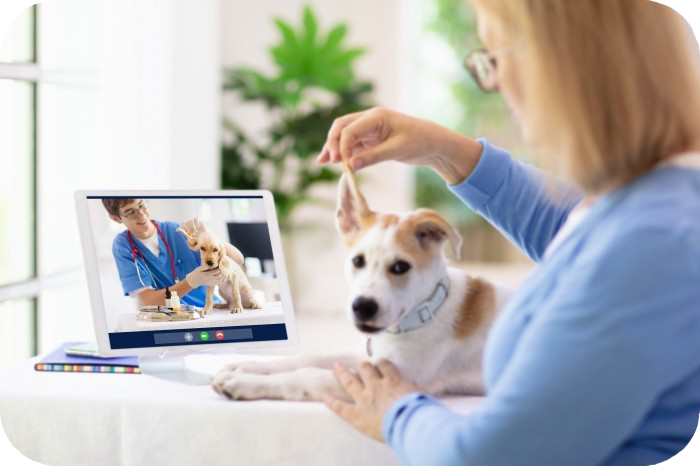
Review symptoms, medications & behavior to keep your pets healthy with a Vet Online in just minutes.
Ask a Vet Live NowWhat Type and Size of Crate Does My Dog Need?
When it comes to choosing a crate, you’ll find a wide variety of shapes, colors, etc. How do you choose the best crate for your pup?
First, consider how you’ll use the crate. Will the crate be used for air travel? If so, will the crate be in the cabin with you, or will your pet travel in the hold? When traveling by air, you’ll have to buy a specific type of crate that meets the airline’s requirements. It will be necessary to check with the airline you’re using to get the particulars. If you’re using the crate for transporting your dog in the car and using it in the house, then you’ll need a crate that’s transportable and the right size for your canine companion and vehicle.
Next, you’ll have to determine the size of crate your dog requires. The general rule is that your dog should have enough room to stand up (without hunching) and turn around in a circle, and lie down in comfort. It’s also important to make sure the crate’s not too big.
Your dog should not have room to potty in one end and then be able to lie down in the other end
Should my dog’s crate be wire or solid plastic? You’ll find both types readily available. Again, the use should be considered when it comes to choosing which type of crate. Wire crates are better for use at home. Plastic, solid crates are better used for air travel and transport by car.
You’ll also find fabric crates available for dogs. These are easily transported, but are also easily chewed, ripped and torn. This type of crate will be easy for your dog to chew out of. He’ll happily let himself out to wander if you’re not watching! Fabric crates are also more difficult to clean, compared to wire or plastic crates.
What about collapsible crates? These are fine if you’re short on space—they’re safe spaces for your dog or puppy.
Another option you’ll find available is a dog training crate with divider. These crates are especially helpful if you have a new puppy that will grow to be quite a bit bigger when he’s an adult. The divider in the crate makes the space smaller, making it more appropriate for your puppy’s size. After he grows, you can later remove the divider. This is also a great way to save money on crates; you won’t have to buy a larger crate after your puppy grows up.
Crate Training Puppies
Crate training puppies can be useful when you use positive reinforcement and only leave your pup in the crate for short periods of time. Leaving your puppy in the crate while you do laundry, take a shower, cook supper, etc. can keep both he and your things safe. Puppies love to chew anything and everything! In addition, your puppy won’t be able to go potty on your favorite rug and he’ll be used to the crate or kennel if he needs to stay at the vet’s for medical treatment.
The best way to get your puppy to love his crate is to keep the entire experience as positive as possible. You can start by making the crate as comfortable. Most puppies love to feel cozy—so fill the crate with a thick pad and blanket your pup can curl up with. So, before starting out, make his “den” comfy and cozy—just the way he likes it.
Next, you might consider using the crate as a napping space for your puppy. You first might begin by leaving your little fur baby in the crate for 10 minutes at a time. Be sure to give him some special treats when he’s in there. Another idea is to offer him some special toys that he only has when he’s in the crate. After the 10 minutes are up, take your puppy out and praise him. Take him for a walk and/or a potty stop outside. He’ll begin to anticipate going for a potty walk when he comes out of the crate.
What about putting puppy in the crate over night? This can be helpful, though the puppy will likely cry the first few nights. Crate training a puppy crying will take some discipline on your part and your puppy will need some calm reassurance that this is all OK.
Have patience—it may take some time for both of you to adjust to this sleeping arrangement
Things to keep in mind:
- Do not leave your puppy in his crate all day: puppies need frequent potty breaks and attention.
- Don’t use the crate as punishment (as noted earlier in the article).
- Don’t lose patience: each puppy learns at his own pace, with some puppies learning quickly and others taking a little bit longer. Stay patient and don’t give up—be consistent and use positive reinforcement to help your puppy learn to enjoy his crate.
You can use a similar method on young adult dogs, too. Just be patient, offer treats, special chew toys and make the crate a cozy place, and your dog will soon enjoy his own special space.
Crate Training an Older Dog
Is it possible to crate train older dogs? Yes, it is! The first thing you’ll need to do is get your old dog used to his new crate. To do this, consider offering him his favorite treat inside the crate. In fact, place his treat inside the crate and leave the door open. Let him go inside when he’s ready. Once he’s inside, offer him boat loads of praise! While he’s in the crate, leave the door open so he can come out when he wants. He may only stay in a few seconds or a few minutes at first. This is OK—you want to introduce him slowly and get him used to the idea of his crate. Don’t worry—old dogs can learn new tricks—but you’ll have to work with him on his schedule and comfort level.
Once he’s become used to being inside the crate and is comfortable with the door open, then you can begin to close the door while he’s inside. You could begin by closing the door for a few seconds or a minute, and then opening it. Another good idea is to give your older fur baby a chew toy while he’s inside the crate. It’s a good idea to stay near the crate, so your precious pup can hear and see you while he’s inside. Leaving the room while he’s closed up could cause him to become afraid and nervous, until he’s used to being in there.
Next, you’ll need to work on increasing the time your dog stays in the crate. This may take some time and patience, especially for a dog that’s used to roaming free. In the beginning, stay in the room with him as you’re increasing the length of time he spends in the crate. Your older pup will learn to feel comfortable in his crate as he gets used to being inside. Once he’s comfortable being inside with the door closed, you can start to leave the room for short periods. Always come back and speak to him and let him know you’re there. Over time he’ll adapt to his new crate, and may even prefer it as a cozy place to take his doggie naps.
A training crate for dogs can be helpful and beneficial to both you and your fur baby. The crate can become your dog’s “bedroom” and private space, while providing a safe haven when traveling. Be patient, offer rewards and special treats and your pup will come to enjoy his new cozy crate.
Related Sources: Humane Society PETA Brown
Connect with a verified veterinarian in minutes. Licensed vets are available 24/7 to answer your questions. No need to worry about your furry family member.

Julie
Julie is a graduate of the University of North Carolina, Wilmington, where she studied Animal science. Though contrary to the opinion of her parents she was meant to study pharmacy, but she was in love with animals especially cats. Julie currently works in an animal research institute (NGO) in California and loves spending quality time with her little cat. She has the passion for making research about animals, how they survive, their way of life among others and publishes it. Julie is also happily married with two kids.
Review symptoms, medications & behavior to keep your pets healthy with a Vet Online in just minutes.
Ask a Vet Live Now
